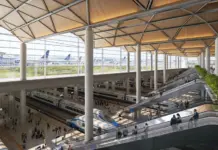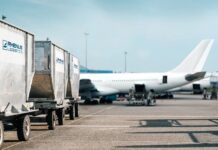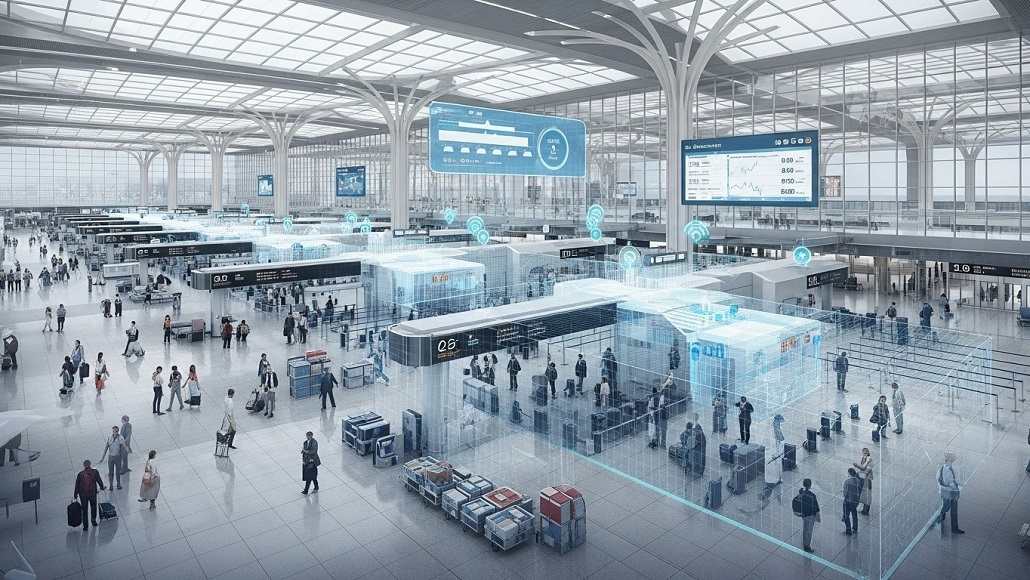In the fast-changing world of airport and transportation infrastructure, digital twins & predictive management in terminal operations are becoming powerful tools that can change the way things work. These revolutionary technologies are no longer just buzzwords discussed at industry conferences; they are now active, data-driven solutions optimizing real-world terminals, from congested international airports to major seaports and intermodal hubs. Operators are changing the way they run their terminals, making them more resilient and safer by using digital twins (virtual copies of physical assets that are connected in real time) and enhanced predictive management powered by AI. This change in the way things are done is not only making things better for passengers and making operations run more smoothly, but it is also allowing companies to deal with infrastructure stress and risk before they happen in a time of uncertainty and high demand.
The Power of Real-Time Simulation for Improving Terminal Flow
One of the best things about integrating digital twins and predictive management in terminal operations is that you can use real-time simulation to make sure that passenger and cargo flow is as smooth as possible. Digital twins are different from typical static models that use previous data. They constantly take in live data from sensors, cameras, and management systems. This lets operators see, analyse, and anticipate terminal performance with unmatched accuracy.
For instance, London Heathrow Airport, a global leader in digital innovation has deployed a digital twin platform that handles live data from over 6,000 IoT sensors throughout its terminals. According to 2023 research by Capgemini, Heathrow’s implementation of real-time simulation has decreased average passenger wait times at security by up to 16% and boosted luggage handling accuracy by 20%. The digital twin gives operators a virtual command centre where they may mimic “what-if” situations, including when a lot of passengers suddenly show up, when equipment breaks down, or when an emergency evacuation is needed. These simulations are based on real-time data, which means they give you useful information that static models can’t.
Another early adopter, Singapore’s Changi Airport, uses digital twins to improve the flow of people, the usage of retail space, and even the air flow. The airport’s system, created with Dassault Systèmes, can simulate passenger flows and advise quick alterations to staffing, queue management, or signage based on predicted congestion models. This method had increased terminal traffic by 12% by 2022, and Skytrax ranked Changi the finest airport in the world several times.
Building Infrastructure Resilience through Predictive Analytics
The increasing number of shocks, from climate-related problems to changing passenger numbers, has made it clear that we need infrastructure that can handle them. Digital twins and predictive management in terminal operations are a game-changing answer to this problem. Predictive analytics use data from the past and the present to predict possible problems, system failures, or environmental stressors. This lets operators switch from reactive to proactive management.
A good example is Schiphol Airport in Amsterdam, where predictive maintenance analytics have slashed annual maintenance expenditures by 15% and incidences of unplanned downtime by 30%, according to a case study by the IBM Institute for Business Value. Sensors in important assets, including escalators and luggage conveyors, send data to the digital twin. The digital twin uses AI algorithms to find problems and guess when parts will need to be serviced or replaced. This not only keeps things from breaking down completely, but it also makes assets last longer and lowers operating costs.
People are also using predictive analytics to help with climate resilience. The International aviation Transport Association (IATA) says that worldwide aviation traffic will exceed 8.2 billion people a year by 2040. Because of this, terminals now have to deal with climate-related catastrophes like heatwaves and flooding. Digital twins, which are integrated with climate modelling, show how extreme weather might affect the movement of people, the systems in buildings, and even the electricity supply. For example, Hong Kong International Airport employs a digital twin to get ready for typhoons and heavy rains by changing evacuation routes and resource allocation depending on real-time weather inputs.
Using AI-based forecasting to improve risk management
Safe and reliable terminal operations require risk management. Digital twins and predictive management in terminal operations are taking this field to the next level by using AI-based forecasting tools that find, measure, and reduce risk in real time. These technologies find hidden trends and weaknesses that traditional risk assessment methods would miss by linking data from security, maintenance, logistics, and customer service systems.
AI-powered digital twins are being used at Dubai International Airport to keep an eye on and predict hazards related to security breaches, equipment breakdowns, and health protocols. A SITA Air Transport IT Insights report says that using AI-based predictions helped Dubai International cut incident response times by 40% and fix 85% of equipment-related problems before they affected operations. The AI program looks at things like how many passengers are on board, how many staff members are available, past incidents, and outside threats. It then gives management a risk map that changes in real time.
Additionally, these skills can be used for managing risk in the supply chain. The COVID-19 epidemic has shown how fragile global logistics networks are. Terminals are already leveraging AI-powered digital twins to predict problems with the flow of goods, keep stock levels at the right level, and cooperate with outside partners to change the routes of shipments as needed. According to a Deloitte study from 2023, the Port of Rotterdam, Europe’s largest seaport, has seen a 6% increase in cargo throughput and a 35% improvement in the accuracy of disruption forecasts because to its digital twin-based predictive management platform.
The Strategic Imperative: Digital Twins & Predictive Management in Terminal Operations
Digital twins and predictive management in terminal operations are becoming more popular, and the industry is moving away from isolated processes and towards integrated, smart solutions that help with decision-making from start to finish. In 2022, the global digital twin market for infrastructure was worth $3.8 billion. MarketsandMarkets predicts that it will rise at a compound annual growth rate (CAGR) of 60.6% and reach $48.2 billion by 2026. Airports, ports, and intermodal hubs are leading the way in this trend since they need to both increase their capacity and improve their operations.
Putting money into digital twins isn’t just a tech move; it’s a smart way to deal with more complexity and risk. The capacity to simulate, forecast, and optimize in real time is increasingly becoming a competitive difference as passenger expectations rise and margin pressures intensify. Also, as regulators put more and more focus on resilience and sustainability, digital twins and predictive management in terminal operations give operators the evidence-based insights they need to follow the rules, report on ESG indicators, and show that they are ready for future shocks.
To sum up, the new operating standard for terminal excellence is
The combination of digital twins and predictive management in terminal operations is a turning point in the history of infrastructure management. Terminals are reaching new levels of safety, efficiency, and resilience thanks to real-time simulation, predictive analytics, and AI-based risk forecasting. Operators may proactively manage congestion, make better use of resources, and see problems coming long before they turn into crises thanks to the combination of these technologies.
As global travel and trade continue to rise and the world becomes less stable, using digital twins and predictive management in terminal operations is not only a technology update; it is a strategic must. The operators who take advantage of this chance now will set the standards for terminal efficiency, resilience, and passenger happiness for years to come. This will keep their assets flexible and competitive in a world where being able to predict and respond is key to success.












